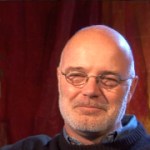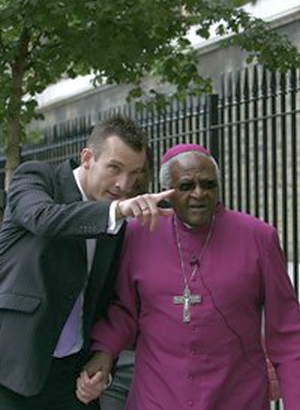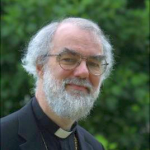Ian Mobsby explores the use of new monasticism as a model of church for some fresh expressions.
 In the last five years with the Moot Community, and in the previous ten with the Epicentre Network, I have been on a journey attempting to do worship, mission and community in the context of post-modern spiritual tourism. You will have come across this every time someone says the mantra: 'I am not religious; I am interested in spirituality.' It has been a journey where this context has really changed me quite profoundly.
In the last five years with the Moot Community, and in the previous ten with the Epicentre Network, I have been on a journey attempting to do worship, mission and community in the context of post-modern spiritual tourism. You will have come across this every time someone says the mantra: 'I am not religious; I am interested in spirituality.' It has been a journey where this context has really changed me quite profoundly.
For too long the church has been bound to unhelpful binaries: lay and ordained, Catholic and Protestant, activist or personal piety, radical and mainstream, and so on. The truth is, if we stand a chance of ever making an impact with the de- and unchurched who are interested in spirituality as a mission imperative, then we will need to draw on variant elements of the wide traditions of our Christian inheritance.
We need to get away from this ridiculous 'them and us' which finds its foundation in misunderstanding, lack of love and fear. I think practitioners of emerging and fresh expressions of church in a post-modern context understand the post-binary holistic need for this more acutely than their predecessors. So, as practitioners, we can draw on 2,000 years of resources of the church to assist us in this task.
The prevailing church culture remains cognitive and propositional rather than experiential
Many people interested in spirituality today trawl the internet seeking spiritual communities that do – and are – what they say they are. They seek communities of integrity where there is love, openness, honesty, inclusion and participation. Unfortunately, too many churches feel like incredibly dysfunctional families where few of these qualities are evident. They are, in effect, spiritually impoverished. The prevailing church culture remains cognitive and propositional rather than experiential.
At the same time, many people are seeking something that goes beyond materialism, consumption and technology. Many have become aware of this need through personal tragedy, addiction, life stages, illness or study. So the challenge is: how to provide opportunities for authentic worship, mission and community for people who are seeking to become more deeply human, unaware that this is a spiritual quest. Such people often do not know who they are, let alone that they have a need for God!
How do you engage with spiritual tourists whilst being authentically Christian? Well, I would encourage people here to really consider models of church. Why? Because if you don't your project will end up with something that is dumbed down, individualistic and consumptive as a default position. This is where the new monastic or new friar model can really help if you are engaging with spiritual tourists.
One of the main mistakes we made with the Epicentre Network is that it was held captive to deconstruction, consumption, individualism and was somewhat anti-theological. Yes, it was very participative, but the lack of a model made it difficult to have a healthy basis. It was a collective of individuals that was never fully able to become a community because of its inability to re-envision or reconstruct. We ended Epicentre after ten good years of exciting and innovative mission activity because it was impossible for it to grow into being fully church. This was a painful lesson.
With Moot in its early days, we focused on the need to balance hospitality and inclusion with the authentic practice of the faith. Yes, experimental and contextual, but authentically Christian all the same. We were struck with the question: 'How do we have a community that allows people to belong who do not believe; that allows them to experience the community; that is authentic and life-giving without dumbing down on the faith?' It was Steve Croft who suggested to me the use of a rhythm of life as a focus to the community, so that it be Christ-centred.
Moot, inspired by the monastic pre-modern rules, crafted a rhythm of life through a communal bottom-up process to form an aspiration for how we wanted to live. Its language was not churchy but spiritual and embodied the gospel. So now we have a mixed community of both committed Christians and those who are spiritually searching, all desiring to live out these aspirations as a form of discipleship, where people are at different stages of the journey.
The pre-modern model of the monastics – and in particular the friars who had a spiritual rhythm of life and were sent to service particular localities – enables us to reframe new monasticism as a helpful model for an open, accessible Christian community with a focus on experience and exploration, that assists people to shift from being spiritual tourists to communitarian co-travelling pilgrims. Moot has developed sacramental (focusing on God's presence with us) and experiential forms of worship, mission and community drawing on this new monastic basis.
So, ancient forms of Christian contemplation reframed into post-modern language and sensibilities become the resources for prayer that work in terms of bringing centredness and peace. Mission then becomes seeking to catch up with what God is already doing in loving service by the whole community through social justice projects, the arts and other imaginative pursuits, and worship becomes an event of encounter of God and other pilgrims as a place of inspiration and hope-sharing.
If you are interested in going deeper with this, check out my two books: The Becoming of G-d and Emerging & Fresh Expressions of Church.
 A few years ago, when the working party for the best-selling Mission-shaped Church report asked questions about church-planting in a questionnaire, there was a less than enthusiastic response from rural areas. As one Church of England official wrote,
A few years ago, when the working party for the best-selling Mission-shaped Church report asked questions about church-planting in a questionnaire, there was a less than enthusiastic response from rural areas. As one Church of England official wrote,


 Beth Keith discusses losing her church shoes.
Beth Keith discusses losing her church shoes.
 In one of my all-time favourite TV shows, an American police sergeant used to send his officers out onto their beat with a: 'Now, make sure you do it to them before they do it to you!' I have lived and worked amongst Muslims in Britain for over five years now and there's a lot of talk about mission and church planting that sounds worryingly like that clarion call to arms. I wonder, though, whether you've ever considered mission as, primarily, a task of listening?
In one of my all-time favourite TV shows, an American police sergeant used to send his officers out onto their beat with a: 'Now, make sure you do it to them before they do it to you!' I have lived and worked amongst Muslims in Britain for over five years now and there's a lot of talk about mission and church planting that sounds worryingly like that clarion call to arms. I wonder, though, whether you've ever considered mission as, primarily, a task of listening?
 People often associate my name with the emerging church or emergent church. It's actually a term I'm not totally comfortable with because in my mind the last thing we need is to slice the pie up: 'We have all these different kinds of churches, and now we have emerging or emergent churches too.'
People often associate my name with the emerging church or emergent church. It's actually a term I'm not totally comfortable with because in my mind the last thing we need is to slice the pie up: 'We have all these different kinds of churches, and now we have emerging or emergent churches too.'
 Messy Church is far too much fun to be proper church! Where's the endurance? Where's the grind? Where's the discipline? Why aren't my Puritanical masochistic itches being scratched? Can we really be truly church and still enjoy it so much? (I shall try to remember this jollity when I'm down on my hands and knees grimly scrubbing off glass paints from the hall parquet floor or sweatily frying up half a dead cow's worth of mince.)
Messy Church is far too much fun to be proper church! Where's the endurance? Where's the grind? Where's the discipline? Why aren't my Puritanical masochistic itches being scratched? Can we really be truly church and still enjoy it so much? (I shall try to remember this jollity when I'm down on my hands and knees grimly scrubbing off glass paints from the hall parquet floor or sweatily frying up half a dead cow's worth of mince.)
 In the last five years with the Moot Community, and in the previous ten with the Epicentre Network, I have been on a journey attempting to do worship, mission and community in the context of post-modern spiritual tourism. You will have come across this every time someone says the mantra: 'I am not religious; I am interested in spirituality.' It has been a journey where this context has really changed me quite profoundly.
In the last five years with the Moot Community, and in the previous ten with the Epicentre Network, I have been on a journey attempting to do worship, mission and community in the context of post-modern spiritual tourism. You will have come across this every time someone says the mantra: 'I am not religious; I am interested in spirituality.' It has been a journey where this context has really changed me quite profoundly.
 I hope this post will be an interesting thought from my perspective as CEO of a church organisation. Church Army is at the forefront of the fresh expressions agenda and our people all over the UK and Ireland are establishing fresh expressions of church, seeking to connect the transforming good news of Christ with those who would otherwise never enter a church. You can view some
I hope this post will be an interesting thought from my perspective as CEO of a church organisation. Church Army is at the forefront of the fresh expressions agenda and our people all over the UK and Ireland are establishing fresh expressions of church, seeking to connect the transforming good news of Christ with those who would otherwise never enter a church. You can view some 
 I think the church over the next few years is going to hear the word of the Lord through the credit crunch. A former diocesan secretary in Canterbury used to say:
I think the church over the next few years is going to hear the word of the Lord through the credit crunch. A former diocesan secretary in Canterbury used to say:
 Rowan Williams, Archbishop of Canterbury, asks 'Is it really church?'
Rowan Williams, Archbishop of Canterbury, asks 'Is it really church?' The remainder of this article can be found in the debut issue of mixed economy, a new journal from Fresh Expressions, which is available free of charge from the
The remainder of this article can be found in the debut issue of mixed economy, a new journal from Fresh Expressions, which is available free of charge from the 
 Jonny writes: 'i sometimes get asked about the relationship between fresh expressions and emerging church. it's all part of the wider change in response to mission in postmodern cultures. fresh expressions is the anglican/methodist initiative. emerging church was the name given to the earlier experiments at the edges that was not denominational that inspired the c of e to write mission shaped church. the edges are blurred and it's not really that important. i know of very few other mainline denominations around the world that have been so prepared to pave the way for newness in response to the changing mission context. it's very encouraging.'
Jonny writes: 'i sometimes get asked about the relationship between fresh expressions and emerging church. it's all part of the wider change in response to mission in postmodern cultures. fresh expressions is the anglican/methodist initiative. emerging church was the name given to the earlier experiments at the edges that was not denominational that inspired the c of e to write mission shaped church. the edges are blurred and it's not really that important. i know of very few other mainline denominations around the world that have been so prepared to pave the way for newness in response to the changing mission context. it's very encouraging.'